“Choose plastic overmolding when the product needs an attractive surface finish with strong wear and tear. It gives a high-quality, refined finish to products, and requires minimal post-processing makes it an interesting process to know about.’’
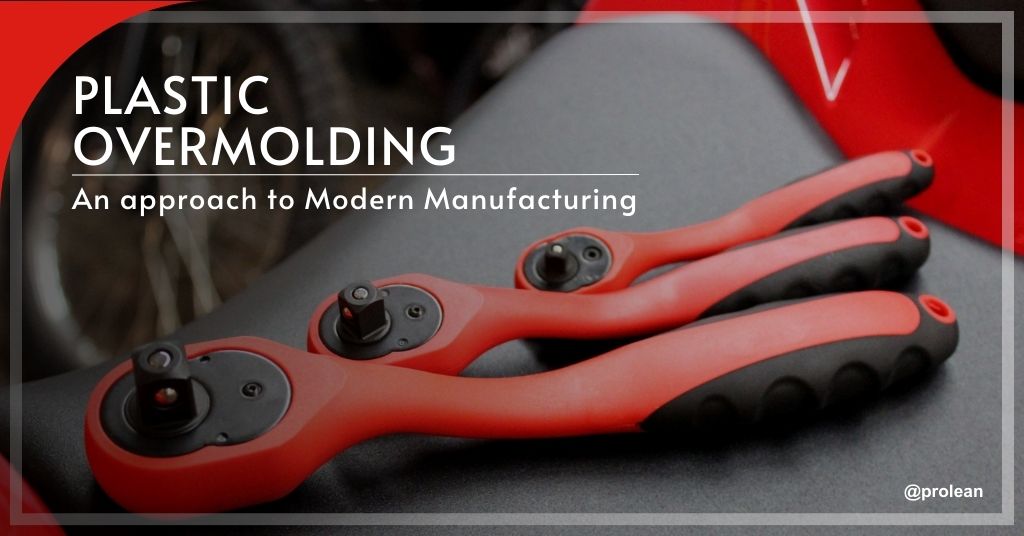
In modern-day manufacturing, plastic overmolding has become a renowned and adaptable method for small-scale businesses to commercial enterprises. The effectiveness and strength are the unique qualities of this technique. Product designers are getting multiple options for designing intricate parts without deteriorating the actual material composition.
Alongside this, it gains attention due to its multifunctionality and utilization of a diverse range of plastics from thermoplastics to elastomers. Over-molding is like a layer of mold on a metal part to protect its surface from any damage. It added an artistic appeal to the part by increasing its shelf life and strength.
This article will guide you about plastic overmolding, common plastics utilized for this process, how and when to choose this process, its complexities and so more.
What is Plastic Overmolding?
Plastic over-molding is an additive manufacturing process that involves molding one material (typically a thermoplastic) over another material (often a substrate or pre-existing part) to create a single integrated product.
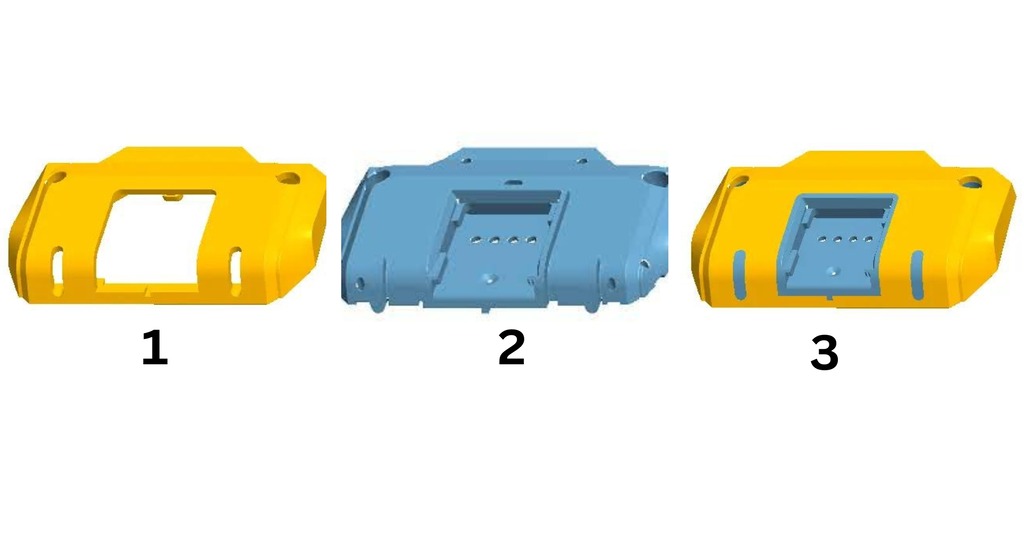
Plastic over-molded part
Unlike traditional molding techniques, which typically involve molding a single material, over-molding allows for the combination of different materials, colors, and textures in a single product.
Therefore, this technique is commonly used to enhance the functionality, aesthetics, and durability of products, offering design flexibility and improved performance.
Plastic Materials Used For Overmolding
Plastic overmolding involves the use of different materials to achieve desired properties and functionalities in the final product. Here are some common types of materials used for overmolding:
Thermoplastic Elastomers (TPEs)
TPEs are versatile materials that combine the properties of thermoplastics and elastomers. They offer excellent flexibility, elasticity, and soft-touch characteristics, making them ideal for overmolding applications where a comfortable grip or cushioning is desired. TPEs are commonly used for overmolding consumer products such as handles, grips, and seals.
Thermoplastic Polyurethanes (TPUs)
TPUs are another type of elastomeric material that offers superior abrasion resistance, tear strength, and flexibility. They are often used in overmolding applications that require durability and impact resistance, such as protective covers, bumpers, and sports equipment. TPUs can be formulated to achieve varying degrees of hardness, from soft and flexible to rigid and tough.
Engineering Resins
Engineering resins, such as polycarbonate (PC), acrylonitrile butadiene styrene (ABS), and polyamide or nylon, are commonly used as base materials in overmolding applications. These materials provide excellent mechanical properties, chemical resistance, and dimensional stability, serving as a rigid substrate for over-molded soft-touch or functional components. Engineering resins are often chosen for overmolding electronic enclosures, automotive parts, and industrial components.
Silicone Rubber
Silicone rubber is a popular choice for overmolding applications that require extreme temperature resistance, biocompatibility, and electrical insulation properties. Silicone over-molded parts are commonly found in medical devices, household appliances, and electrical connectors. Furthermore, silicone rubber offers excellent flexibility and long-term durability, making it suitable for demanding applications where reliability is critical.
Hybrid Materials
Some overmolding applications may require the combination of different materials to achieve specific performance requirements. Hybrid overmolding involves the use of multiple materials, such as thermoplastics, elastomers, and metals, in a single integrated part. This approach allows manufacturers to tailor the properties of each material to meet the desired functionality, aesthetics, and performance of the final product.
By selecting the appropriate materials for overmolding, manufacturers can optimize the properties and performance of their products, creating innovative solutions that meet the needs of consumers across various industries.
Try Prolean Now!
Plastic Overmolding Techniques
There are several techniques utilized for plastic over-molding. Here are some most commonly employed plastic overmolding techniques:
1- Insert Overmolding
In insert or single-shot overmolding, a pre-formed component or insert is placed into the mold cavity before plastic material is injected. The plastic material then surrounds and bonds to the insert, creating a single integrated part. Thread tapping, a machining process, is employed before the overmolding stage to create precise threaded features within the insert. (If you want to know more about thread tapping: Here’s our Comprehensive Guide on Thread Tapping)
This enables the incorporation of threaded elements into plastic components, such as holes for screws or bolts, providing enhanced functionality and versatility in product design. Moreover, Insert molding, which often incorporates thread tapping, is commonly used for adding features such as threaded inserts, electrical contacts, or reinforcement elements to plastic parts. It is considered a low-cost overmolding technique among others as it brings low assembly costs.
2- Two-Shot Overmolding
Two-shot overmolding, also known as two-material or multi-shot molding, involves using a single mold to inject two different materials sequentially. The first shot forms the base part, and the second shot molds the over mold material onto specific areas of the base part. Two-shot overmolding enables the creation of multi-material parts with different colors, textures, or material properties in specific regions.

2k or two-shot Overmolding
3- Multi-Material Overmolding
When it comes to multi-material overmolding, this technique uses multiple materials in the same mold to create complex, multi-layered parts. These materials can be over-molded onto specific areas of the base part to achieve desired functionalities.

Multi-material over-molded parts
Moreover, this technique is used for applications requiring combinations of rigid and flexible materials, soft-touch surfaces, or integrated gaskets and seals.
4- Plastic Co-Injection Molding
Co-injection molding, also known as sandwich molding or dual-shot molding, involves injecting two or more materials simultaneously into the mold cavity. The materials flow through separate channels and combine within the mold to form a single integrated part with a core and shell structure. Co-injection molding is used for applications requiring enhanced material properties, such as improved strength, durability, or surface finish.

Plastic co-overmolding
What are the Industrial Applications of Plastic Overmolding?
Plastic Overmolding due to its diversity and multifunctionality serves various industries. Here are some of the applications of plastic overmolding.
1. Automotive Industry
Plastic overmolding plays a crucial role in the automotive sector, where manufacturers seek to enhance both the aesthetics and functionality of vehicle components. Overmolded parts are commonly used in interior trim, such as door handles, dashboard panels, and gear shifters, to provide a soft-touch surface for improved ergonomics and comfort.
Additionally, over-molded grips on steering wheels and gear knobs offer better control and reduce fatigue during long drives. In exterior applications, over-molded trim pieces can withstand harsh weather conditions, enhancing durability and longevity.
2. Consumer Electronics
In the consumer electronics industry, product design is important, and plastic overmolding offers a versatile solution to meet aesthetic and functional requirements. Overmolded components, such as smartphone cases, earphone cables, and gaming controller handles, provide users with a comfortable and ergonomic grip while protecting delicate electronics from impact and wear.
Furthermore, overmolding enables the integration of buttons, switches, and sensors directly into the device housing, streamlining assembly and improving user experience.
3. Medical Devices
Plastic overmolding is widely used in the medical device industry to create products that prioritize patient comfort, safety, and usability. Overmolded handles on surgical instruments and medical devices provide healthcare professionals with a secure grip and reduce hand fatigue during procedures.
Moreover, in prosthetics and orthopedic devices, over-molded soft-touch surfaces improve user comfort and encourage compliance with treatment regimens. Additionally, overmolding seals and gaskets ensures the integrity of medical devices, protecting against moisture, dust, and contaminants.
4. Consumer Goods
From kitchen appliances to sporting goods, plastic overmolding enhances the performance and aesthetics of consumer goods across various product categories. Overmolded handles on kitchen utensils and tools offer a comfortable grip and improved control, while over molded grips on sports equipment, such as bicycles and golf clubs, enhance user comfort and performance.
Furthermore, in household products like power tools and gardening equipment, overmolding provides durability and impact resistance, prolonging product lifespan and reducing maintenance costs.
5. Industrial Equipment
In the industrial sector, plastic overmolding finds applications in a wide range of equipment and machinery. Overmolded grips on handheld tools and machinery controls improve operator comfort and productivity.
Moreover, over-molded seals and gaskets ensure the watertight and dustproof sealing of electronic enclosures and industrial components, protecting sensitive equipment from environmental hazards. Additionally, over-molded wear-resistant surfaces on machinery components enhance performance and reduce maintenance requirements, increasing operational efficiency and uptime.
Try Prolean Now!
Injection Molding Vs. Plastic Overmolding: Know the Differences
While plastic over-molding shares similarities with injection molding, there are key differences between the two processes. Injection molding is a broad term that typically involves molding a single material into a predefined shape, whereas overmolding allows for the combination of multiple materials to achieve desired properties such as soft-touch grips, impact resistance, or weather resistance. Additionally, plastic overmolding enables the integration of components, reducing assembly time and costs. Let’s figure out their differences based on various aspects.
Table: Comparison between plastic over molding and injection molding.
| Aspect | Plastic Over Molding | Injection Molding |
| Definition | Molding one material over another to create an integrated part | Molding a single material into a predefined shape |
| Design Flexibility | Offers greater design flexibility due to the ability to combine materials, colors, and textures | Limited design flexibility; suitable for simpler geometries |
| Component Integration | Allows for integration of components during the molding process | Components may require secondary assembly |
| Tooling Costs | Typically higher due to the need for specialized molds and additional processes | Lower initial tooling costs |
| Assembly Time | Reduces assembly time by integrating components during molding | May require additional assembly steps for multi-component parts |
| Product Aesthetics | Enhances aesthetics with multi-material, textured surfaces | Limited to single-material appearance |
| Applications | Widely used in industries requiring ergonomic grips, soft-touch surfaces, and multi-material assemblies | Common in industries with high-volume production and simpler part designs |
When to Choose Plastic Overmolding?
Plastic overmolding is a versatile manufacturing process suitable for various applications. Here are some scenarios when it’s advantageous to choose plastic overmolding:
- Enhanced Product Functionality: When a product requires additional functionality, such as soft-touch grips, ergonomic handles, or impact resistance, plastic overmolding allows for the integration of different materials to achieve desired properties
- Improved Aesthetics: If aesthetics are crucial for the product’s appeal, plastic overmolding enables the creation of multi-color or textured surfaces, enhancing visual appeal and brand differentiation.
- Component Integration: For products requiring integrated components, such as buttons, sensors, or seals, plastic overmolding allows for the consolidation of parts, reducing assembly time, and improving reliability.
- Cost Reduction: In scenarios where reducing assembly costs, part count and secondary operations are essential, plastic overmolding can offer cost savings by eliminating the need for additional components and assembly steps.
- Customization and Personalization: When customization or personalization is desired, plastic overmolding enables the incorporation of logos, branding elements, or user-specific features without compromising part integrity.
- Improved Ergonomics: For products requiring ergonomic design features, such as handheld devices or tools, plastic overmolding can provide comfortable, non-slip grips, enhancing user comfort and usability.
- High-Volume Production: In industries with high-volume production requirements, such as automotive or consumer electronics, plastic overmolding offers economies of scale and production efficiency, making it a cost-effective solution for large quantities.
- Prototype Development: For rapid prototyping or iterative design processes, plastic overmolding allows for quick design iterations and functional prototypes, enabling faster time-to-market and product validation.
By considering these factors, manufacturers can determine whether plastic overmolding is the right choice for their specific application, balancing factors such as functionality, aesthetics, cost, and production volume to achieve optimal results.
What are the Challenges Associated with Plastic Overmolding?
Here are some challenges associated with plastic overmolding briefly outlined below:
- Material Compatibility: Ensuring compatibility between the base and overmold materials can be challenging, leading to issues such as delamination or poor adhesion.
- Design Complexity: Overmolding complex geometries may require intricate mold designs and precise process control to achieve desired results.
- Process Optimization: Fine-tuning process parameters for overmolding can be time-consuming and may require extensive testing to achieve optimal part quality.
- Tooling Costs: Designing and fabricating overmolding molds can be expensive due to the complexity of mold features and additional processes.
- Quality Control: Maintaining consistent part quality across over-molded parts requires rigorous quality control measures and inspection protocols.
- Material Handling: Proper handling and storage of overmold materials are essential to prevent contamination, moisture absorption, or degradation.
- Surface Preparation: Adequate surface preparation of base parts is necessary to promote adhesion and bond strength between layers.
- Component Integration: Integrating components during the overmolding process requires precise alignment and coordination to avoid misalignment or assembly issues.
Nine Key Tips For Plastic OverMolding
Although there are some challenges associated with plastic overmolding, by considering these tips, you can increase the effectiveness of the process.
- Choose a compatible base and over-mold materials for a strong bond.
- Design molds with proper venting and cooling channels.
- Fine-tune process parameters like injection speed and temperature.
- Prepare the base part’s surface for adhesion and bond strength.
- Securely position the base part in the mold cavity.
- Handle overmold materials carefully to prevent contamination.
- Implement in-process inspections and dimensional checks.
- Plan for trimming, finishing, and assembly operations.
- The over-molding material must have a melting point equal to or lower than the substrates.
Read more:
- The Clash of Plastics: Thermoset vs. Thermoplastics – A Comprehensive Guide
- A Comprehensive Guide to EDM Drilling Applications And Advantages
- Laser Cutting Sheet Metal: Techniques, Materials, and Applications
Try Prolean Now!
Overmolding Services at Prolean
Prolean’s overmolding services offer a broad range of material choices for overmolding. From robotics to medicine and automotive applications, we offer a diverse range of materials to craft aesthetically pleasing products.
If you’re looking for an expert platform for your overmolding project, you have come to the right place. So, upload your design and get a free quote.
Summing Up
Plastic over-molding offers exceptional benefits to product designers in terms of the durability and aesthetics of the product. It enables manufacturers to choose from a range of plastics for their desired product requirements. Its benefits include minimal cost per part, utilization of various plastic materials, and in-tolerance parts with minimal turnarounds.
Moreover, this process gains attention due to its wide range of applications from small startups to commercial landscapes. Although there are some challenges associated with this process, the tips aforementioned will help you to make the process more effective.
Furthermore, it’s best to seek help from professionals or consult with experts to make suitable choices for materials. They guide you on how you can achieve the best outputs with minimal costs in short time cycles.
FAQs
Q1- How can I ensure proper adhesion between the base and overmold materials?
Proper adhesion between the base and overmold materials can be ensured through surface preparation techniques such as cleaning, roughening, or applying adhesion promoters. Additionally, optimizing process parameters such as injection temperature, pressure, and cycle time can help improve bonding strength.
Q2- Which plastic over-molding technique is best? One shot or 2k?
The suitability of both techniques depends on various factors, for instance, design complexities, costs, production volumes, etc. Here are key the differences between the two;
Insert overmolding or one-shot is a straightforward overmolding technique that needs minimal assembly and tooling costs. On the other hand, the 2k over-molding process is complex and requires high precision in terms of mold design. So, it can be more challenging and time-consuming.
Q3- What are some best practices for designing parts for plastic overmolding?
Here are some best practices for designing parts for plastic overmolding;
- Optimizing part geometry for moldability
- Minimizing wall thickness variations
- Incorporating draft angles for easy ejection
- Avoid sharp corners or undercuts, and
- consider material shrinkage and warpage tendencies
Q4- How can material compatibility be ensured in plastic overmolding?
Material compatibility in plastic overmolding can be ensured through material testing, the selection of compatible materials with similar melting temperatures and shrinkage rates, and proper surface preparation techniques to promote adhesion.

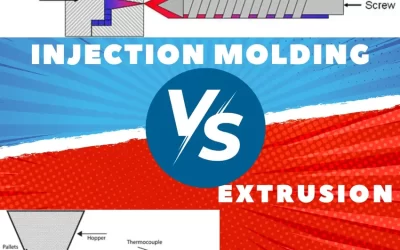
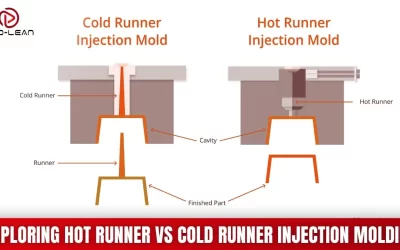
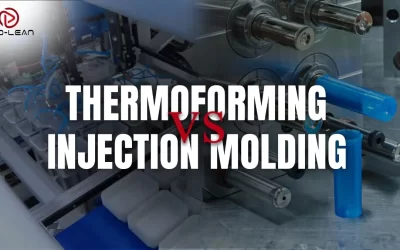
0 Comments